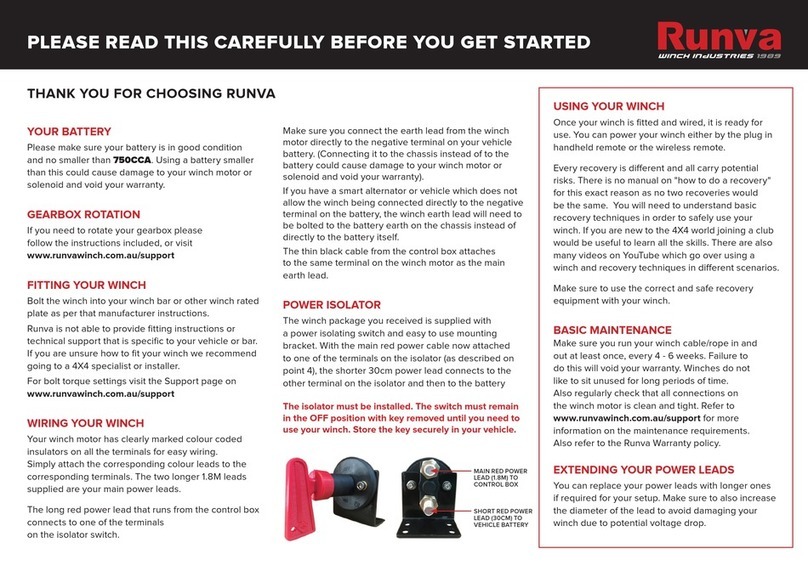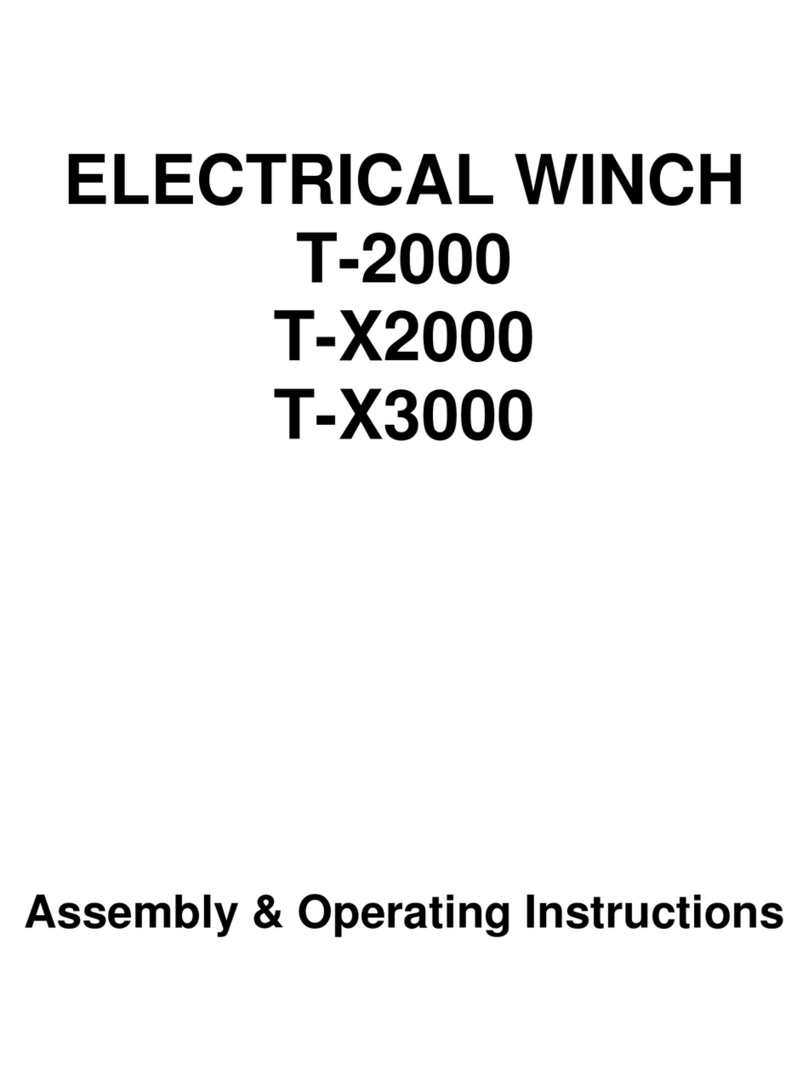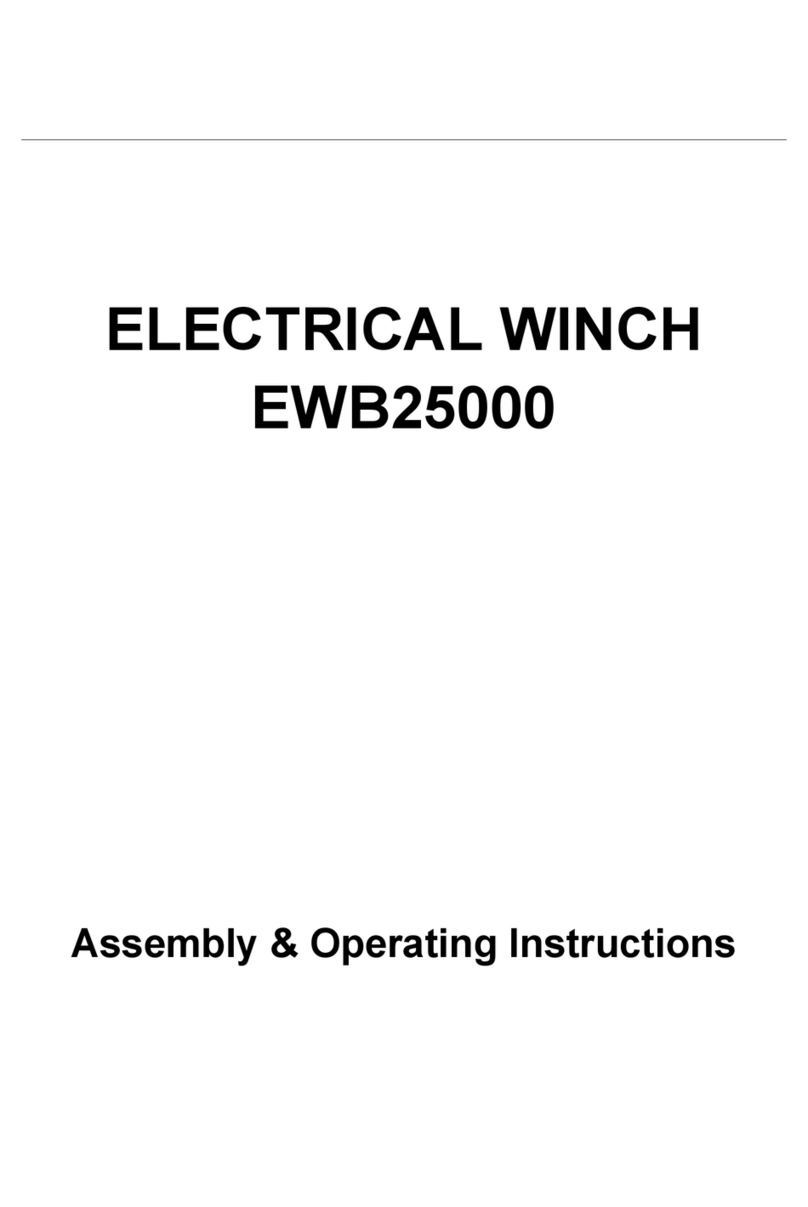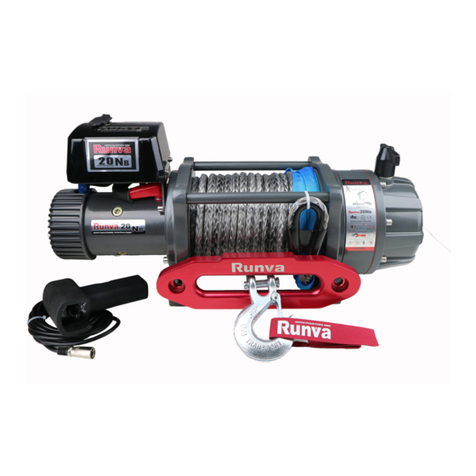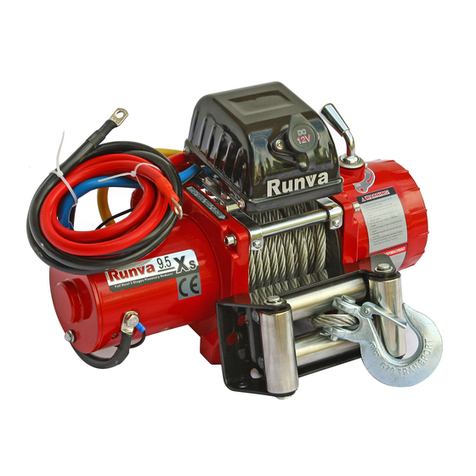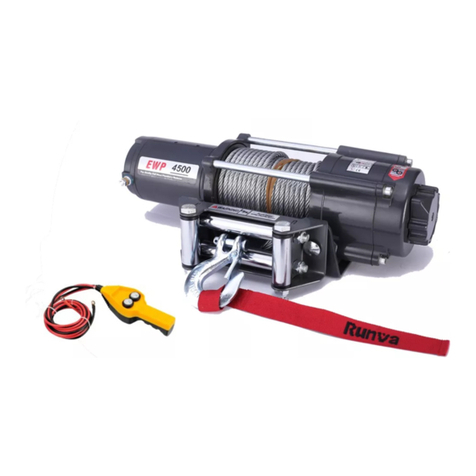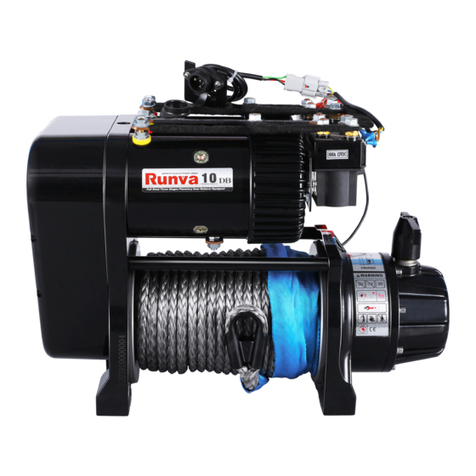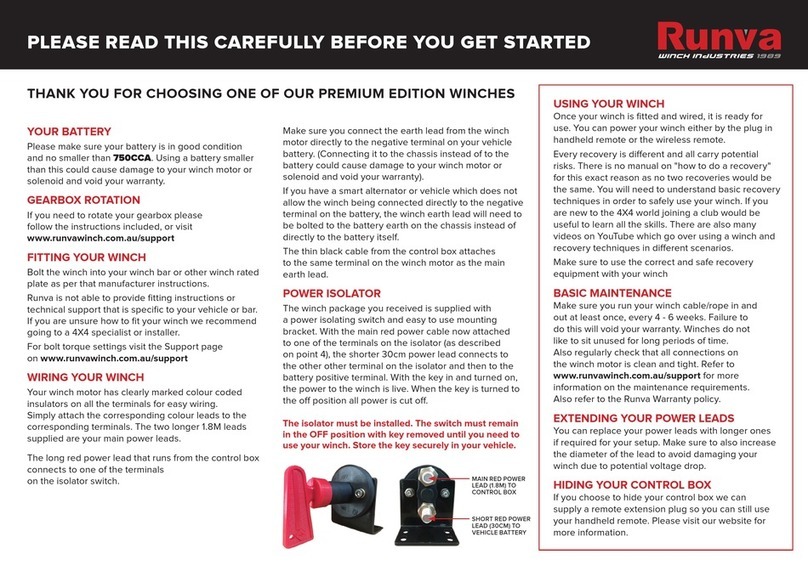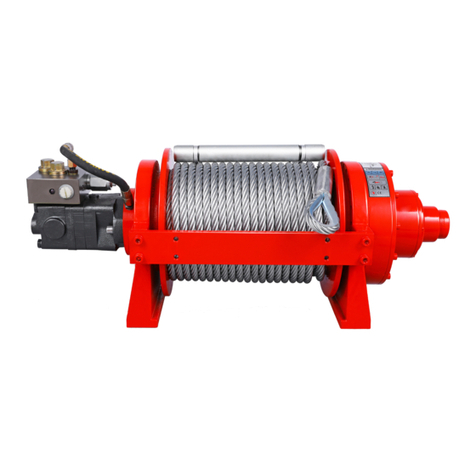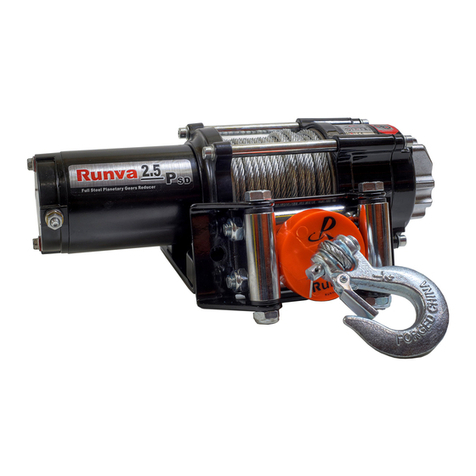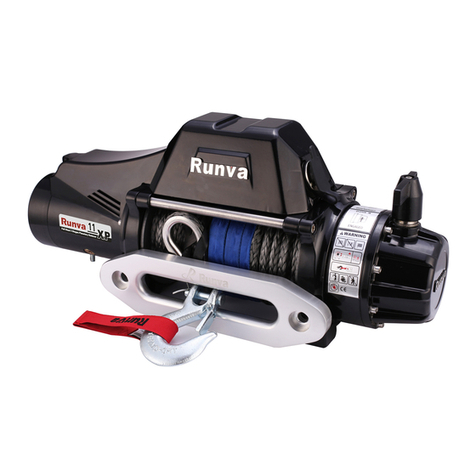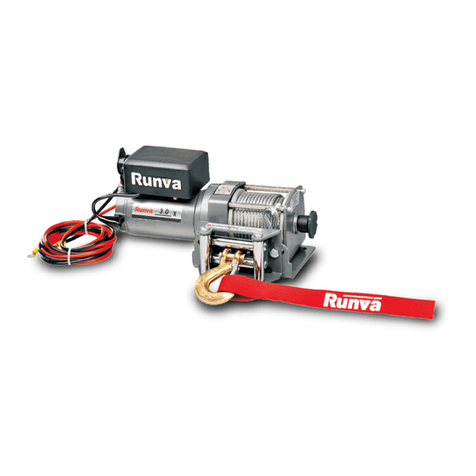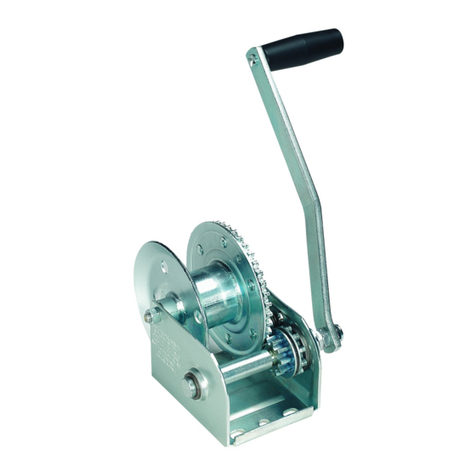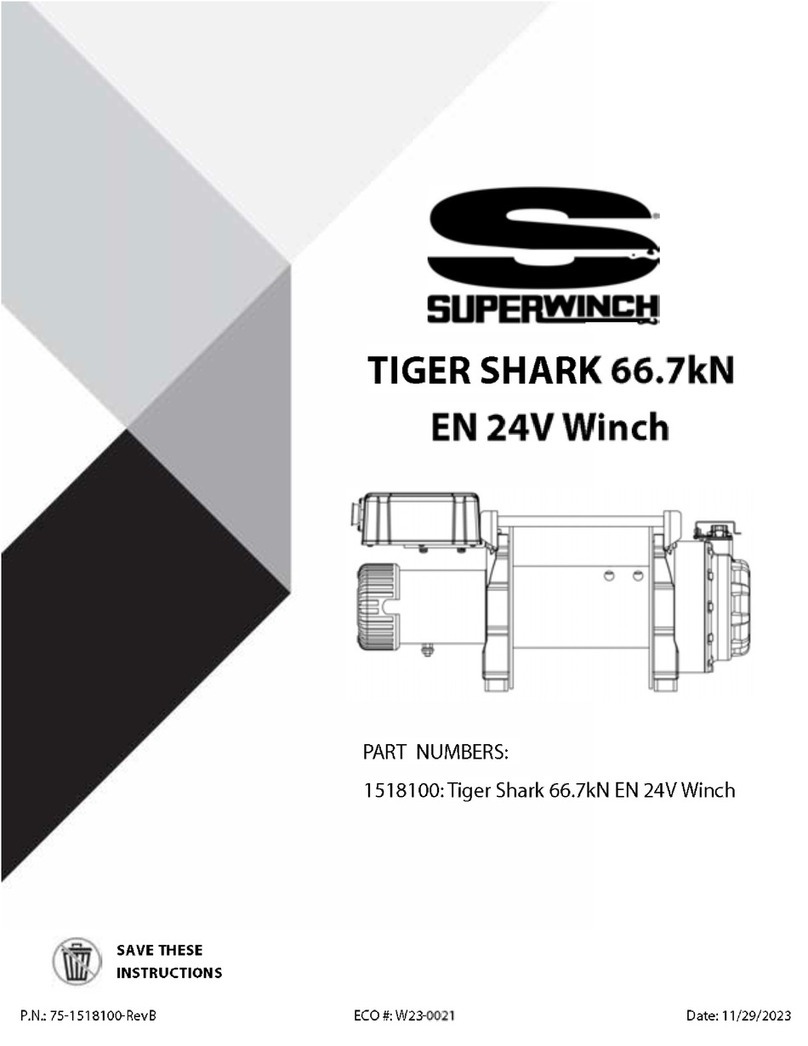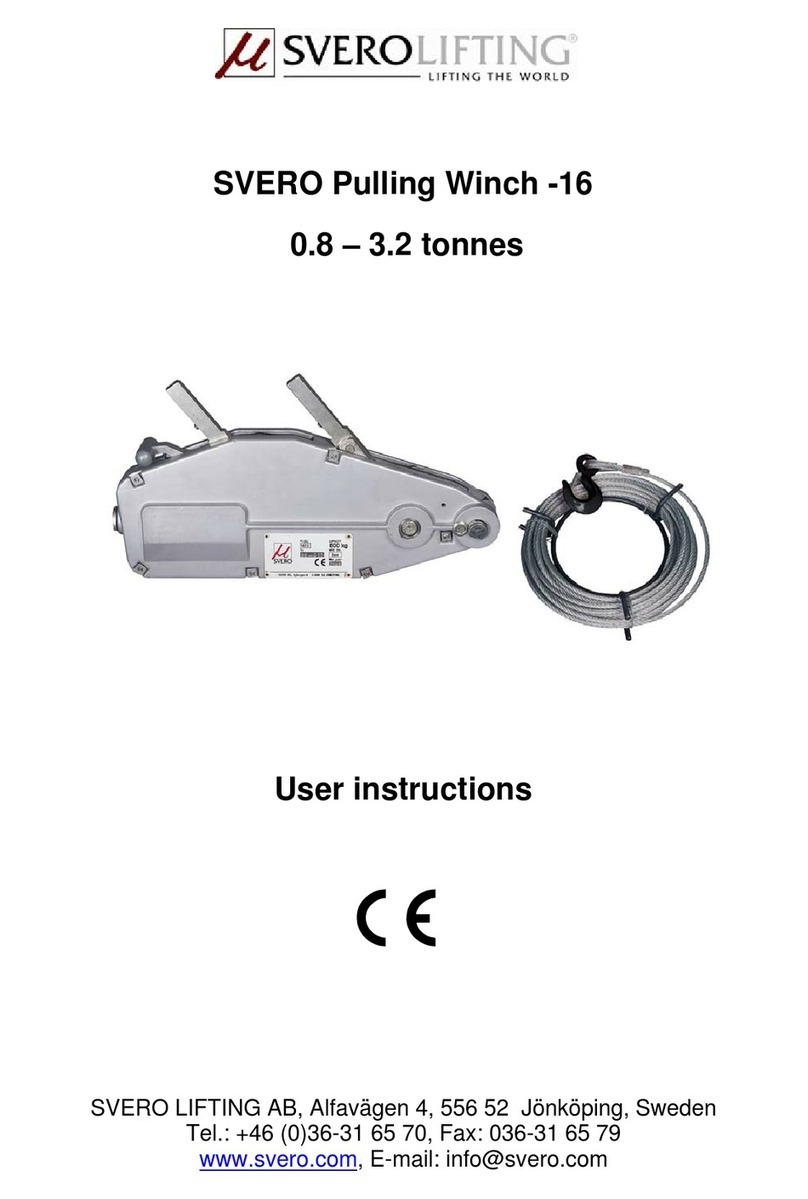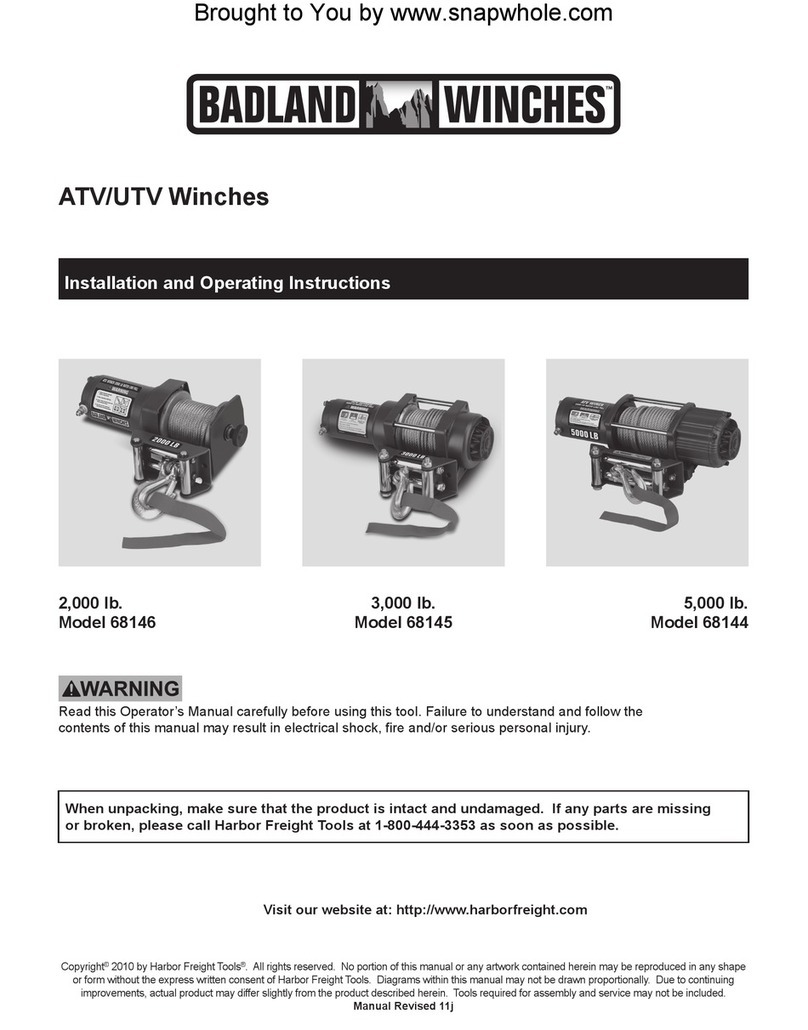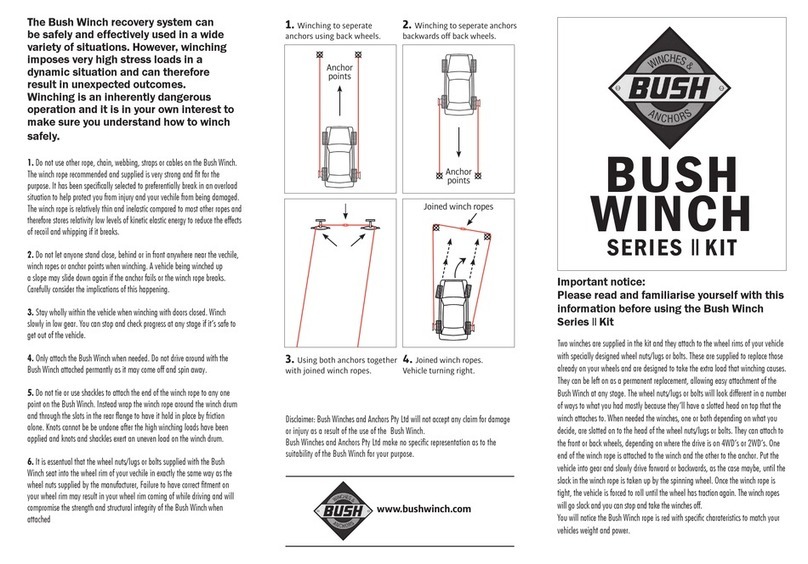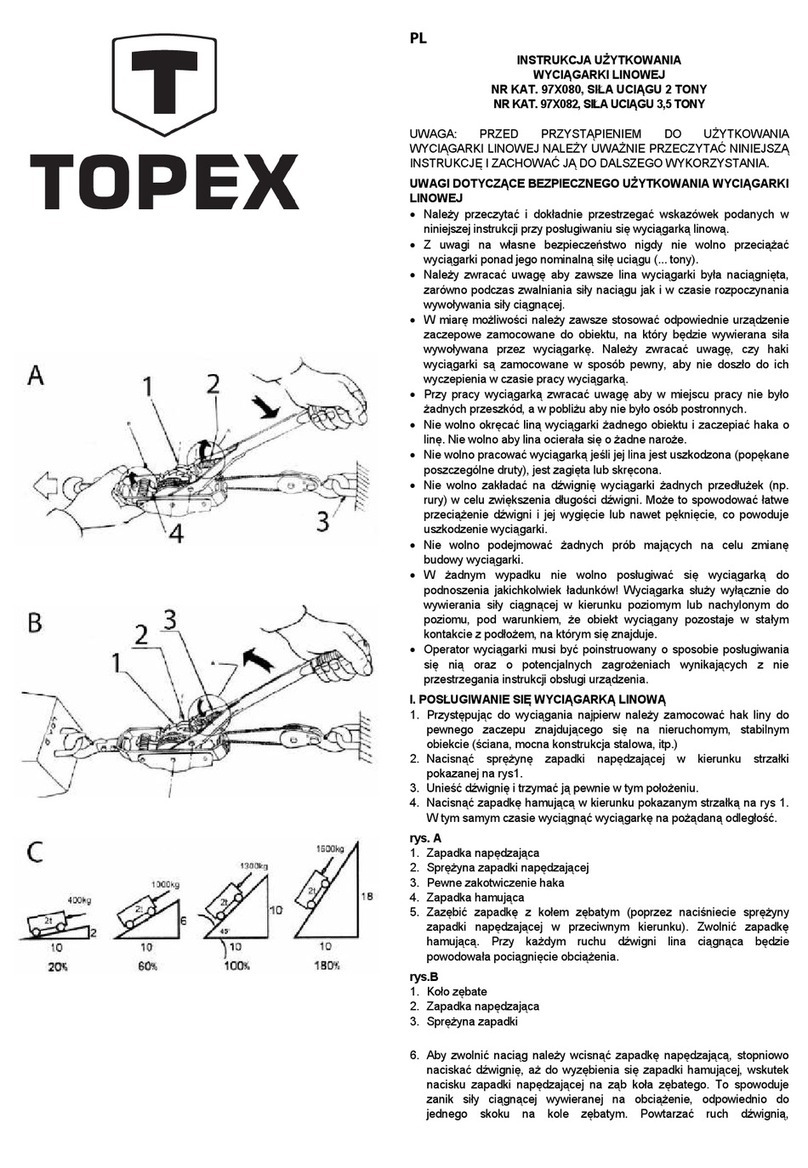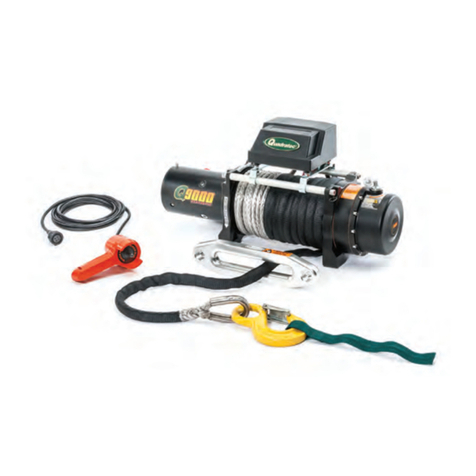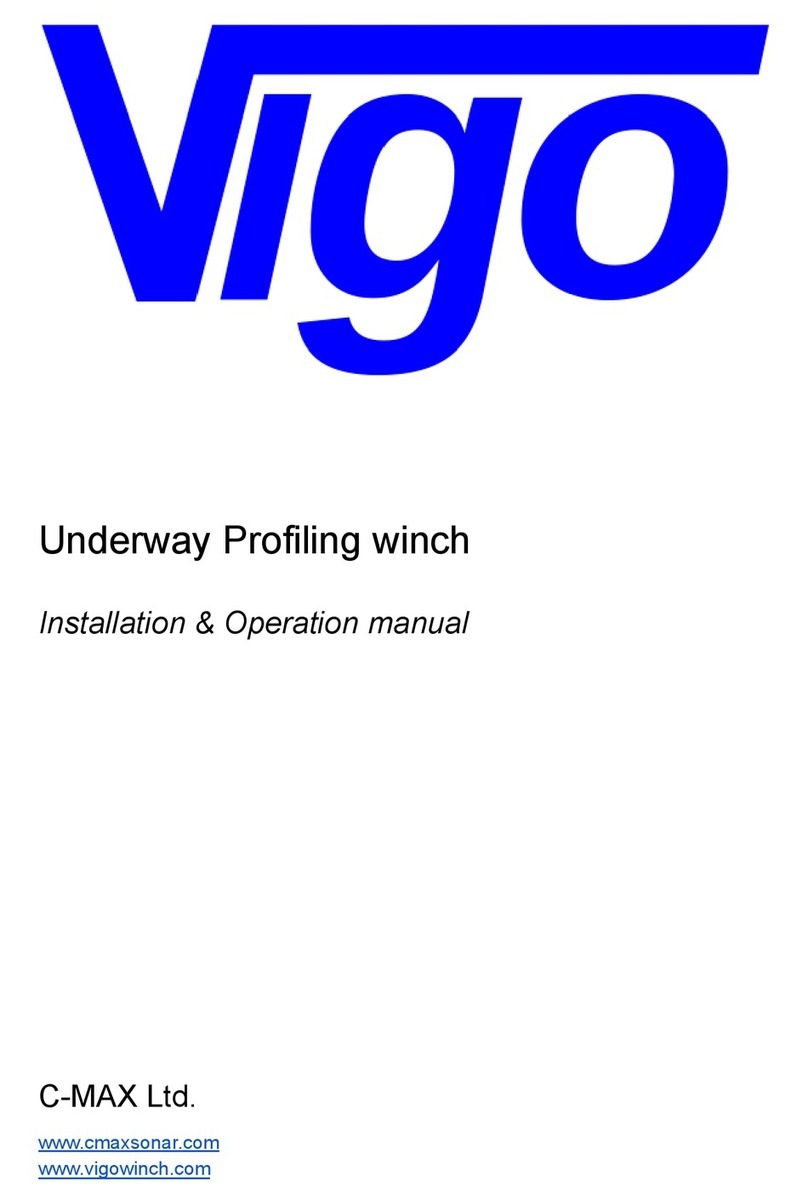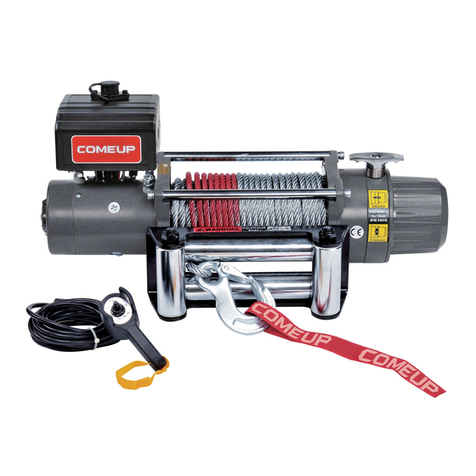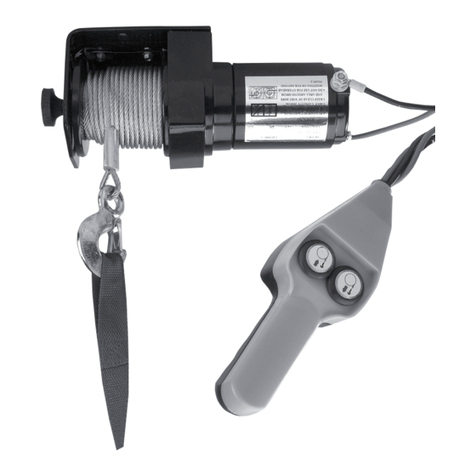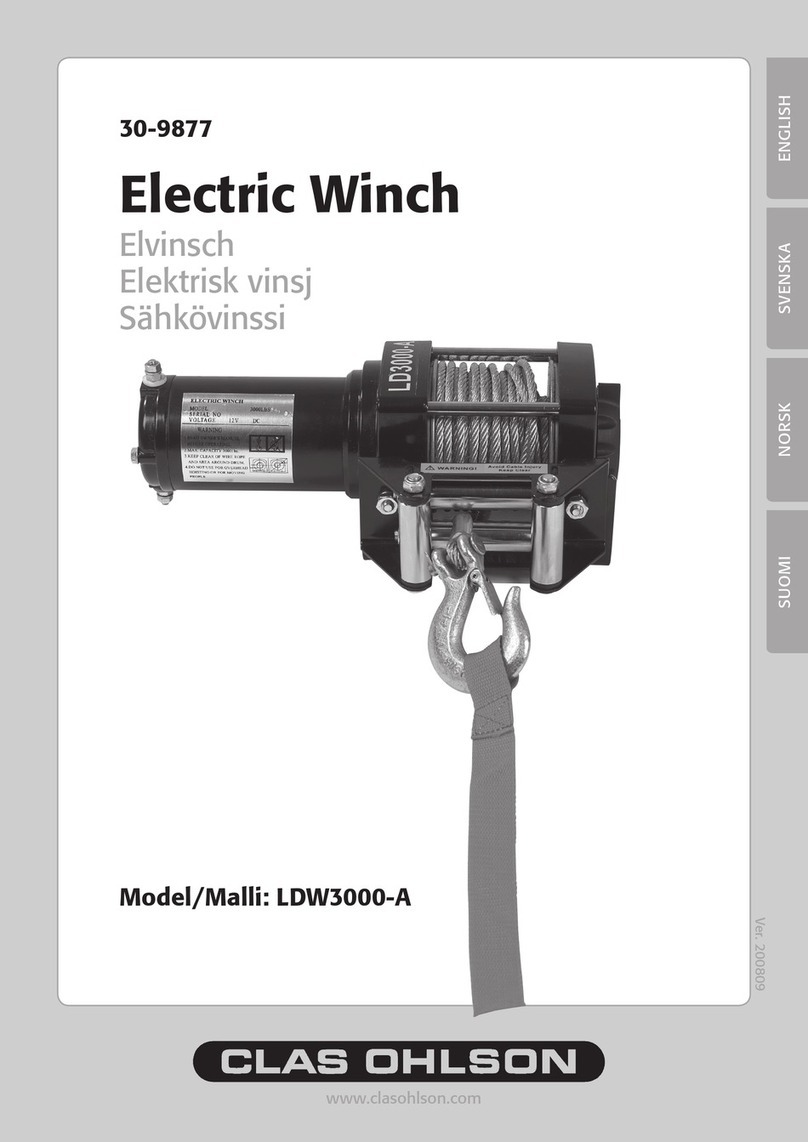
2
GETTING TO KNOW YOUR WINCH
Your winch is a powerful piece of machinery. It is important that you
understand the basics of its operation and specifications so that when you
need to use it, you can use it with confidence and safety. Below is a list of
the components of your winch and their use. You should practice using
your winch before you are in a situation where you need to use it.
1. Runva EWD series is part of our new product line with several patented
technologies and has its own salient features: two speeds, single shaft clutch
and speed control, and automatic reducer gear engagement. There are three
positions of reducer gear engagement, high gear, low gear, and free spool.
This new technology has made Runva winches the pinnacle in user
convenience and reliability. You will take pride in knowing that your new winch
has been designed to work as hard as you and that it will be there when you
need it. This winch is engineered for maximum line pull with only one layer of
cable spooled onto the winch drum (the first layer).
2. Motor: Your motor is powered by a 12/24 volt battery and provides power to the
gear mechanism which turns the drum and winds the wire rope;
3. Winch Drum: The winch drum is the cylinder on which the wire rope is stored. It
can feed or wind the rope depending on the remote winch switch.
4. Wire Rope (cable): Your winch has a galvanized aircraft cable designed
specifically for load capacity of rated line pull. The wire rope feeds onto the
drum in the “under wind” position through the roller fairlead and is looped at the
end to accept the clevis hook pin.
5. Roller Fairlead: When using the winch at an angle the roller fairlead acts to
guide the wire rope onto the drum and minimizes damage to the wire rope from
abrasion on the winch mount or bumper.
6. Mechanic Gear System: The reduction gears convert the winch motor power
into extreme pulling forces.
7. Braking System: Braking action is automatically applied to the winch drum
when the winch motor is stopped and there is a load on the wire rope. A
separate mechanical brake applies the braking action.
